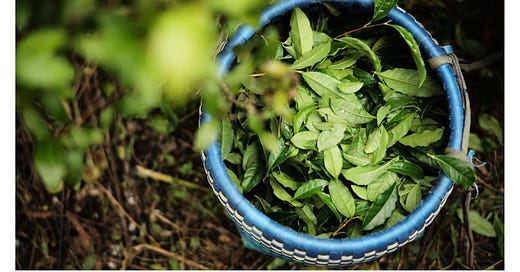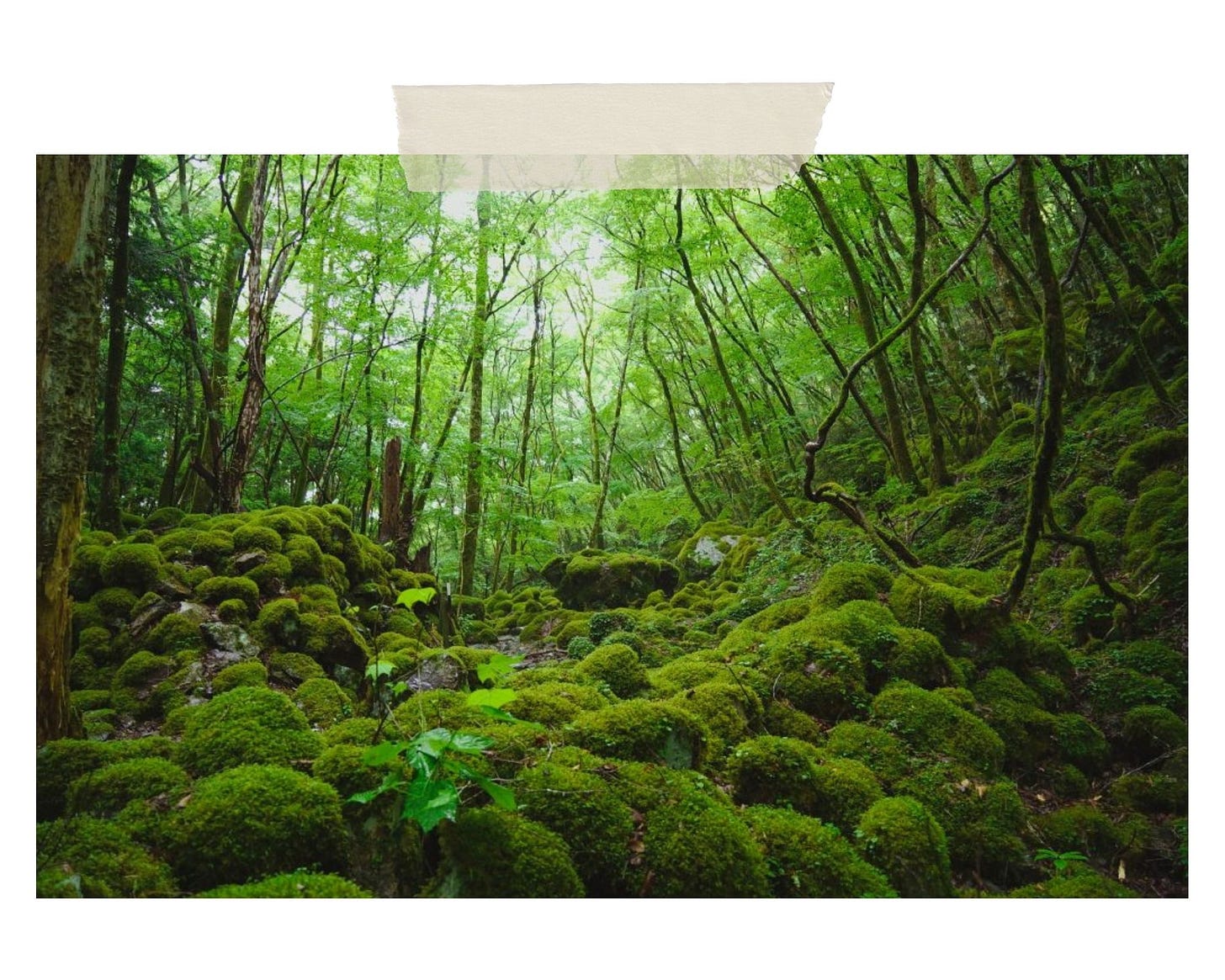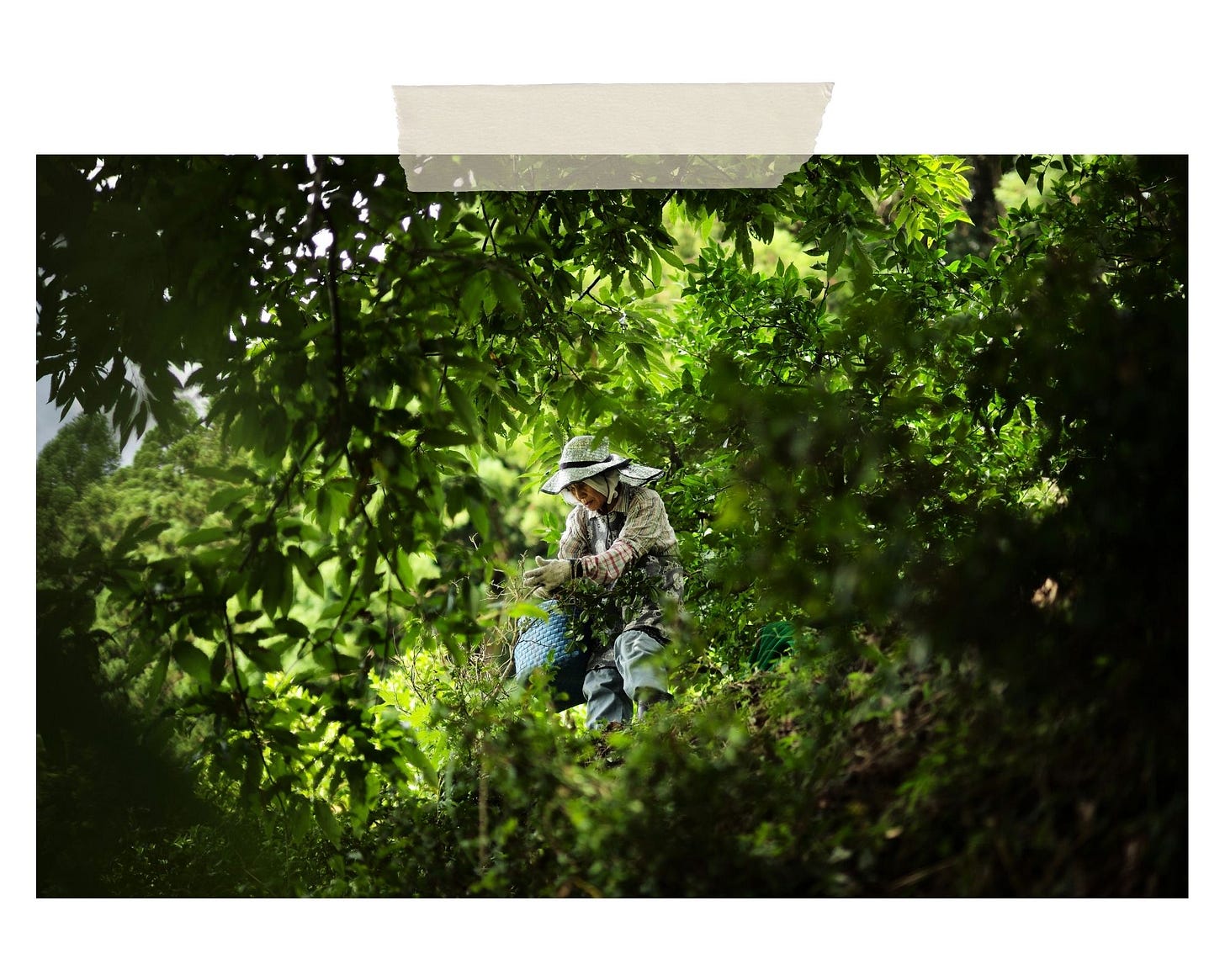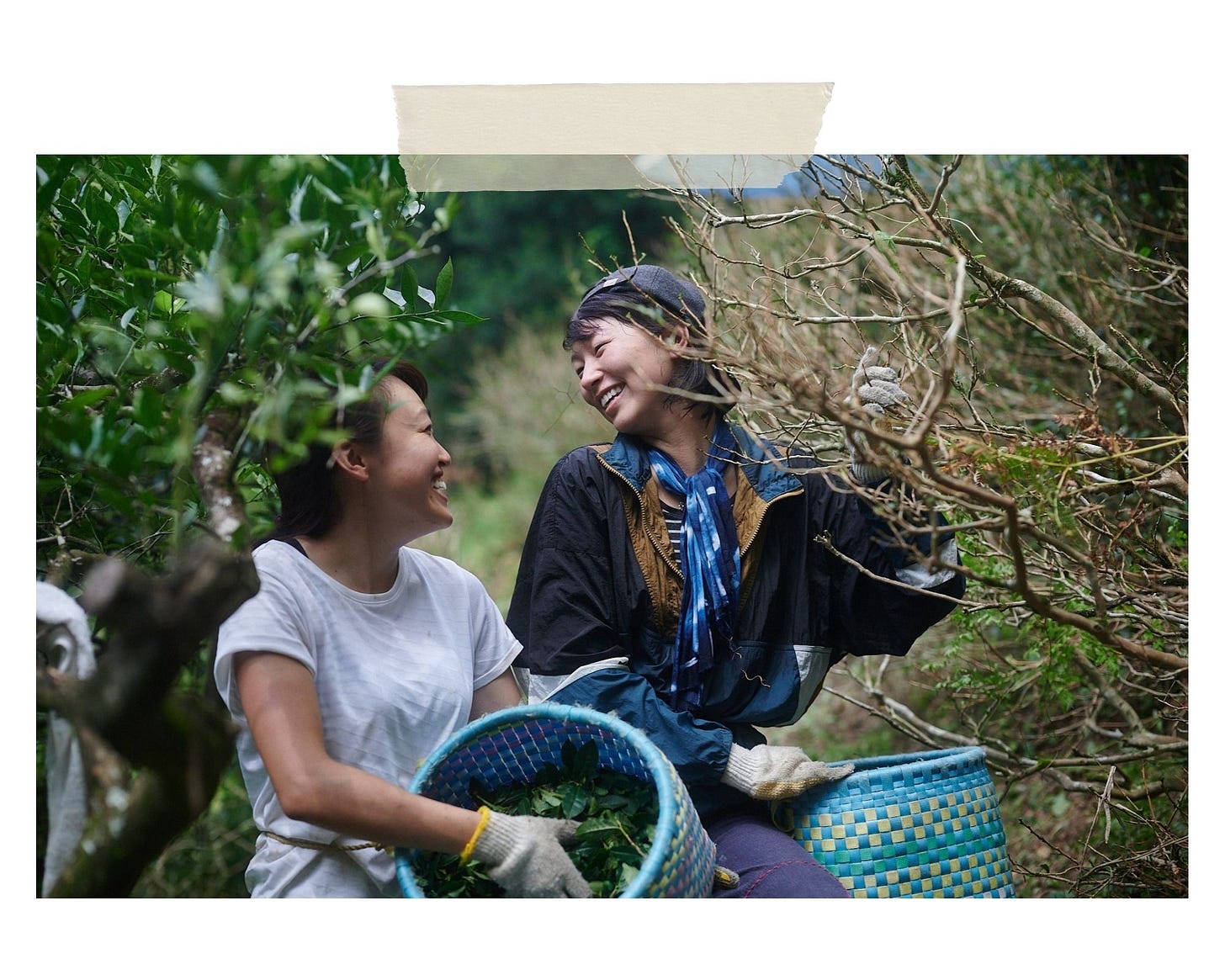Dear friends,
Summer has set in Kamikatsu—the air feels hotter and heavier. While there’s still a tiny reprieve in the early morning and late evening with cooler air, most of the day is like wading through a warm mist. The heavy rains of tsuyu have come and gone by surprisingly quick this year, passing by most of Japan like a transient guest, and giving way to a hot summer.
The end of the rainy season and the onset of long sunny days have made Kamikatsu transform into a jungle-like landscape. Grass and weeds grow wildly in competition with plants and flowers; vines seem to weave and climb their way through every nook and crevasse.
The rice fields no longer look like little individual stalks of grass, but more like a thick bed of lush green. The long blades of rice stalks seem to sway as one, in union with the wind. The soundscape is also a wonderful sensory journey with the shrill of the cicadas most prominent and an orchestra of birdsongs.
Awa Bancha Tea
The start of July marks the beginning of the awa bancha season. Awa bancha is a fermented green tea that is a unique tradition native to Kamikatsu and a neighbouring village called Naka. Step aside matcha and sencha (green tea)—awa bancha is a tea you’ve likely never heard about allow me to briefly share its wonderful history.
Awa bancha is a common drink found in most households in Kamikatsu. Awa derives from the old kingdom of Awa, which is the now-prefecture of Tokushima. Bancha uses the kanji (Chinese character) for “late” and refers to tea harvested in summer, which is ‘late’ in comparison to green tea which is picked in early spring for the new leaves.
For centuries in Kamikatsu, the locals head into the mountains every year during the height of summer, to hand-pick tea leaves that are grown naturally. Farmers don’t cultivate farmland and maintain rows of tea fields, rather they maintain areas where tea leaves have been growing naturally in the mountains.
The hand-picked leaves are boiled, rolled, and pressed down in a barrel to undergo a slow fermentation. The fermentation can take weeks, even months, depending on the weather. Once fermented, the leaves are individually hand-opened and left out in the sun for drying. It’s a time-consuming and tiring process, but the final tea is a wonderful aromatic fermented tea.
Season to gather
In early July, everyone is in the season of picking, which means it’s the season of gathering. Many hands are required to help complete this laborious task that can only be done by hand.
Awa bancha used to be made by each household, meant to be made and consumed by the family. Now a handful of farmers can grow enough awa bancha to sell. Every year farmers are worried that there won’t be enough hands to help with the tea picking—a shortage of labour is a serious concern that seems to be a shared sentiment among the community. And because many of the farmers are elderly, every year several farmers stop making awa bancha.
Most of the locals who help pick tea leaves are older, some in their 40’s and 50’s, but most are much older. While picking leaves, I get to meet so many local people that I don’t often interact with—their local dialect is so thick that I can barely understand. I try to listen and learn their conversations, mostly letting their voices trail off like background music. The conversations are filled with reports about what’s growing at their farms and gardens. They share advice on how to maintain their cucumbers, when is the proper time to harvest the watermelon, and how to keep bugs away. They catch up on stories of each other’s children and grandchildren.
One story can take so long to finish because the grandmas fill their narratives with so much detail. If it was a friend telling the same story I think I’d laugh and tell them to please get to the point, but in those moments with the locals, I remind myself to enjoy the breath of each detail. Being with them, with their stories, is a reminder not to push for arrival to a conclusion and to enjoy the long winding roads that a simple story can take.
It would probably sound dramatic to say that my life changed because of awa bancha, but in a way, it sort of did (at least my life in Kamikatsu did). Once I learned of awa bancha importance to the community, I naturally found myself wanting to learn more about its history and how the tea is made. Learning how it’s made meant being alongside those who make it. Last year, my friend and I made our own small barrel of awa bancha, technically becoming the youngest bancha farmers in Kamikatsu. Awa bancha gave me a beautiful ‘in’ into the community and a ritual I can partake in every summer season.
Thank you for being with me this week.
Sharing updates this summer may be intermittent these next two months as I focus my attention and time on the farm and in the garden. But, I leave you this week with beautiful writing about gardening.
200 Years of Great Writers and Artists on the Creative and Spiritual Rewards of Gardening by The Marginalian
One of my favourite books mentioned in the article is The Book of Delights, by poet and gardener Ross Gay. His book documents a yearlong experiment in willful gladness, to seek and understand ‘delight’. He writes, “the more you study delight, the more delight there is to study… I felt my life to be more full of delight. Not without sorrow or fear or pain or loss. But more full of delight.”
I also reflect on the quote by Robin Wall Kimmerer, author of Braiding Sweetgrass. She says, “a garden is a way that the land says, “I love you.” … Gardens are simultaneously a material and a spiritual undertaking.”
How simple things can sometimes be… like a ripe tomato in a garden. Life is layered and complicated without our assistance so let’s focus on the simple things and let go of the weight of all that feels heavy to embrace lightness.
Have a wonderful week—I hope you can find solace in your community, in stories that take too long to finish, and in unexpected delights.










Konnichiwa Kana chan ! I sure enjoy reading your weekly missives . Your writing is as clear , fresh ,and sweet as this simple , natural lifestyle you appear to be living . Peace and Joy to you and the frogs in the rice paddies !
Chris Allegri , Orcas Island , Washington , USA
This is beautiful!